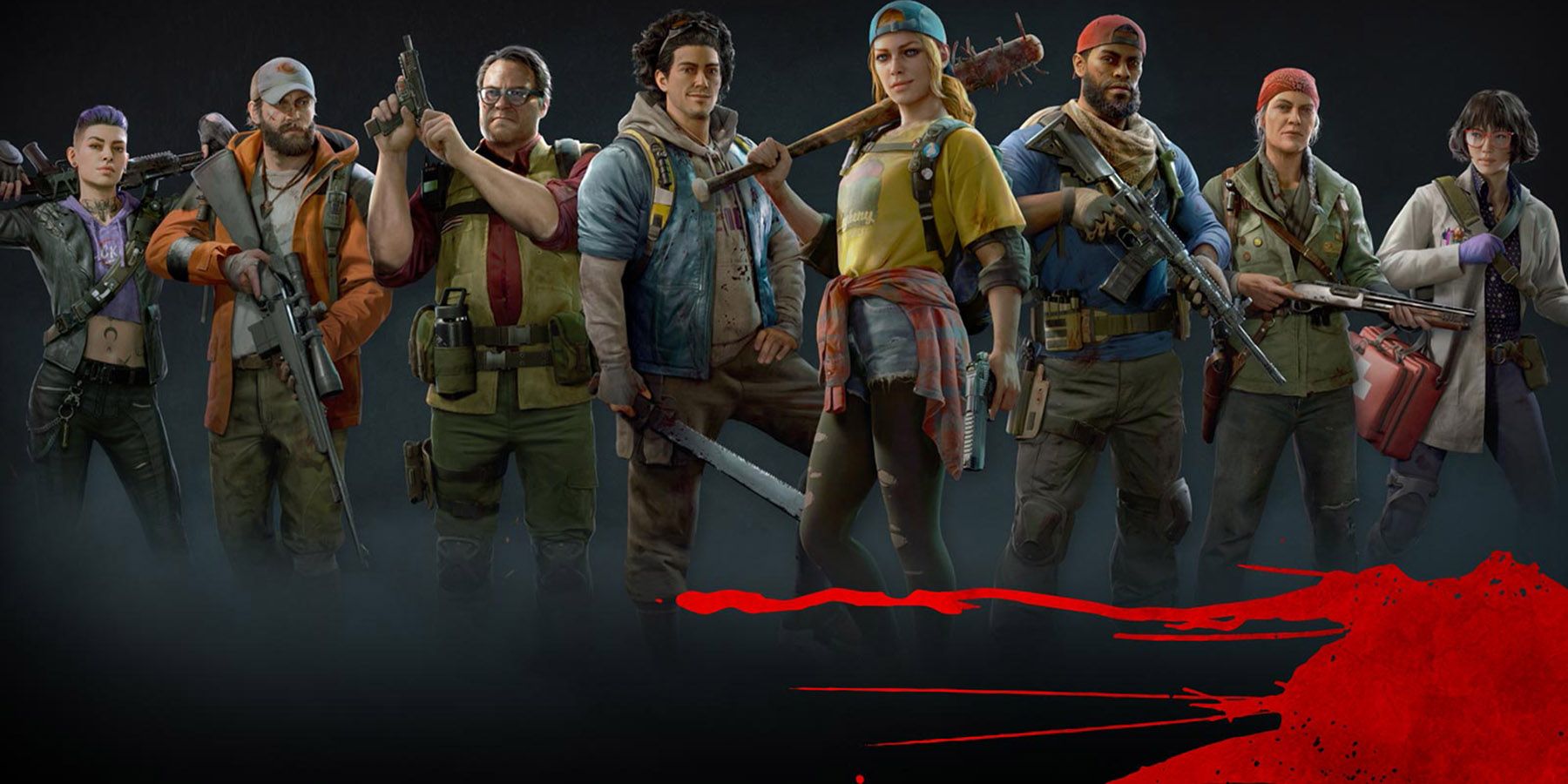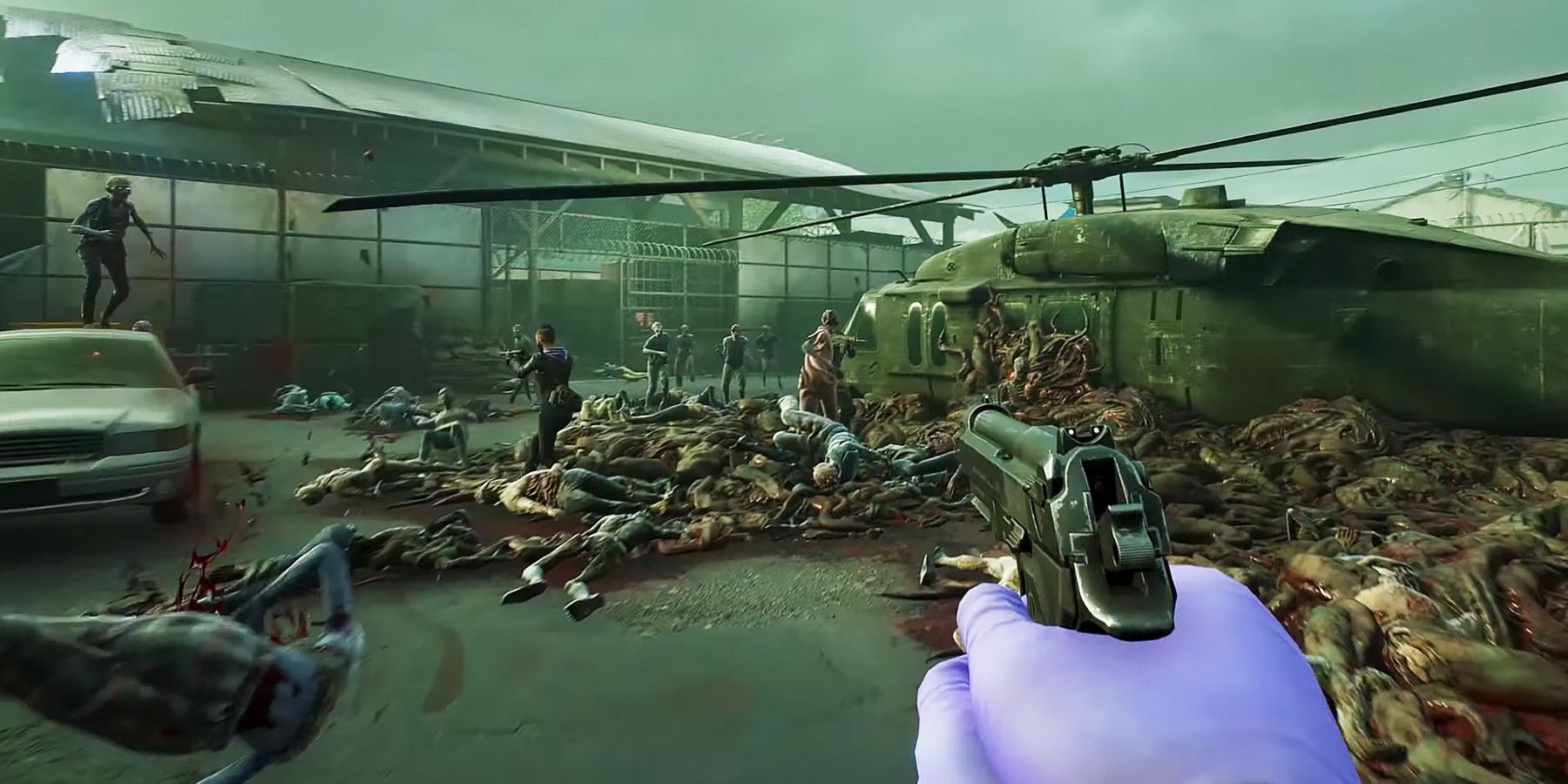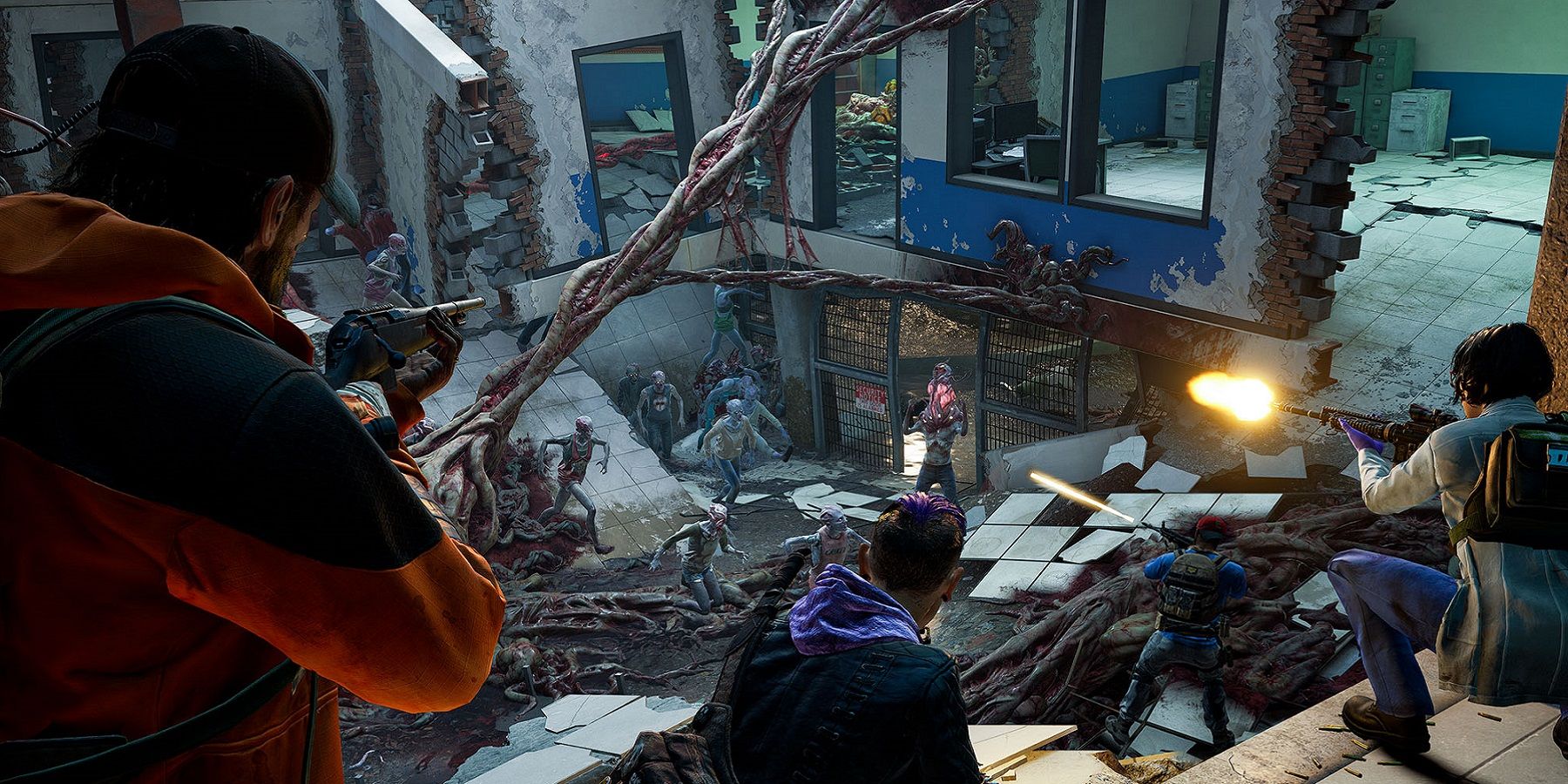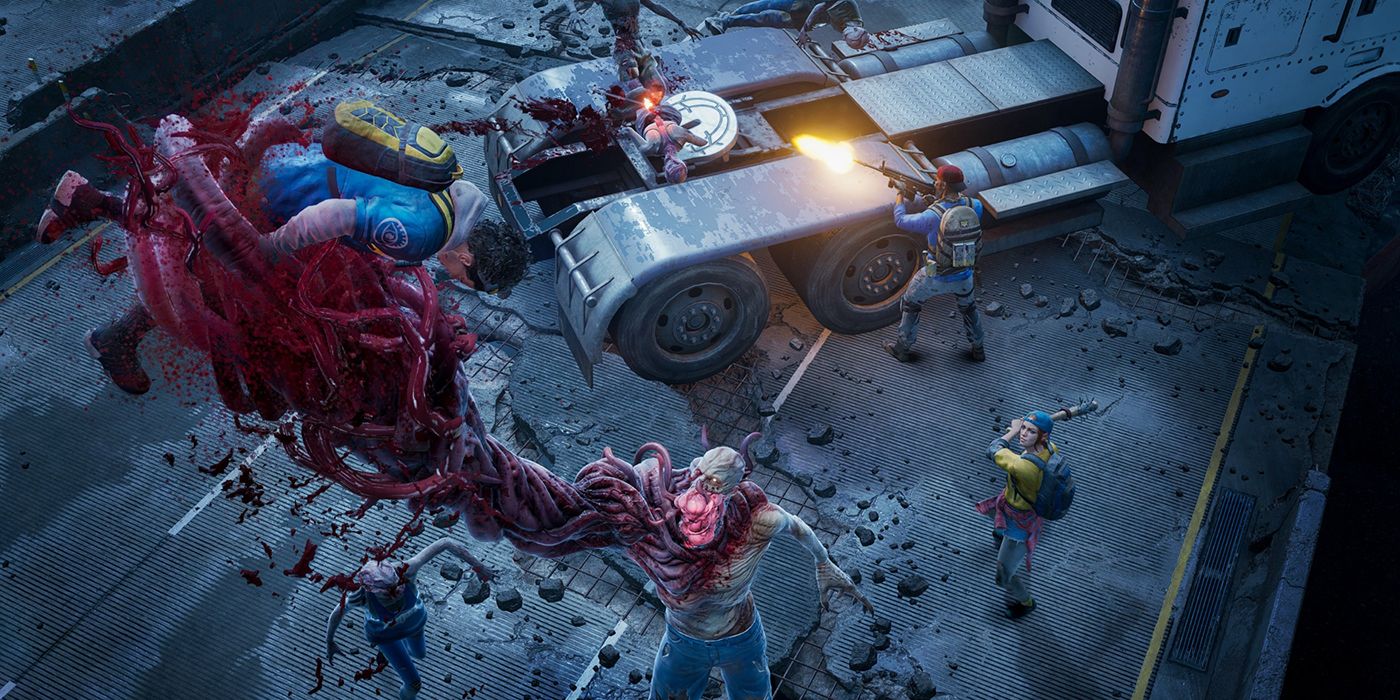Back 4 Blood is one of many Left 4 Dead-inspired games to recently release, but it comes with one major advantage: Back 4 Blood is made by the same developer as Left 4 Dead, Turtle Rock Studios. This loose connection between the games is quite obvious, as much of what made Left 4 Dead great is readily apparent in Back 4 Blood. However, the latter comes with flaws that are serious headscratchers.
Back 4 Blood may be the best Left 4 Dead-like game on the market in gameplay terms. It offers players a lengthy campaign, especially for this sort of game, and the replayability of its core design is quite high. The core gameplay loop utilized in the campaign is straightforward but fun: advance through each mission, defeat hordes of "Ridden" zombies, and reach the next safe room.
Some of the missions in Back 4 Blood play with this formula, offering just enough variety where players won’t get too bored of doing any one thing all too often. Sometimes, players have to take a defensive stance and fight off hordes of infected. Other times, players have to find a specific item on a map, spend time preparing it for something, and surviving against the onslaught of the horde. The most common variations appear just enough to keep players grounded in the gameplay, while allowing for some levels to stand out as more unique.
By ensuring that each in-game goal variation isn’t overutilized, it helps elevate Back 4 Blood's gameplay above mindlessly killing zombies (though there is plenty of that thrown in too). The varied mission goals, coupled with excellent level design, make playing through each mission as fun as the last one. Players may find themselves trapped with zombies in the woods, in a school, or in a mass grave, and while players will sometimes revisit locations more than once (like the area around Fort Hope), each environment stands out from the next.
“Just enough variety” to keep a Back 4 Blood player’s attention seems to be the goal, and it works. The same can be said for the variety of enemies players will face. While the common infected are seen the most often even these creatures can be modified in-game to make them more challenging. Whether facing the common zombies or any of the variants like a Tallboy, Retcher, Ogre, or Snitch, players can find just enough variety to keep the gameplay enticing—especially when Corruption Cards come into play.
This combines well with the gunplay and various card challenges in the game. Players are able to find an assortment of pistols, shotguns, assault rifles, sniper rifles, light machine guns, melee weapons, and more in Back 4 Blood, and each weapon feels and fires differently. For example, it’s very easy for a game like Back 4 Blood to make sniper rifles feel out of place, as they are not often viable against hordes of enemies, but that’s not really the case here. They can be just as destructive as LMGs in the right hands, but that’s not to say that sometimes one specific weapon isn’t better in a given situation, though.
Furthermore, Back 4 Blood features a card system that modifies each round, gives players boosts, and influences the undead in a variety of ways. These cards can reveal a shortage of power or a heavy fog, it can modify how each and every zombie type in Back 4 Blood works, or it can present players new tasks like completing the mission in X amount of time. Normally, cards in a video game like this can seem out of place, but the truth is Back 4 Blood is made mostly better because of them.
Turtle Rock Studios theoretically could have slapped Left 4 Dead 3 on this game, and in its best parts, it would absolutely shine as a proper threequel to the past two games. It scratches that certain itch and, despite being a new title called Back 4 Blood, is filled with nostalgia. However, Back 4 Blood is brought down quite heavily by something not found in the Left 4 Dead series: a lack of respect for a player’s time.
First off, the sheer lack of support for solo players is incredibly disappointing. Back 4 Blood players who don’t want to go online to play with strangers or friends are punished for not doing so, as the solo experience is missing key components. Essentially, players can not complete any of the progression-oriented tasks in the game, locking them out of everything from cosmetics to new Back 4 Blood characters to achievements. A good example is the need to kill 53, 600 zombies for one achievement, but any kills made playing solo do not count toward it.
Turtle Rock Studios is reportedly working on this and at some point post-launch, these issues are expected to be fixed. Yet, it’s undeniable that this is a massive flaw in the game and one that feels punishing. It’s hardly the only odd decision in the game, though, and it comes with other issues as well. Some of these are small, like there being no way to remove an unwanted weapon attachment without replacing it with another. Others, like the PvP mode Swarm, feel like an emotionless attachment to the base game.
At the same time, Back 4 Blood is about putting together a viable build to complete a run. If players struggle at any point in the run, losing all of their “continues,” then they can repeat the same level but are handicapped in terms of cards and weapons. This is supposed to add a “roguelike” element to the game, but it’s already replayable enough without forcing players to end at a certain point and either go back some to get a better start or play the same level that was just lost without everything built up so far.
Back 4 Blood’s story isn’t revolutionary, nor does it have to be. It essentially takes a “here are zombies, shoot zombies” approach, and that’s good. It’s another zombie apocalypse game about ending the zombie apocalypse, and it doesn’t reinvent the wheel on how it happens, why the outbreak happened, or anything like that. There’s just no real characterization in it. The main NPC giving all the orders is forgettable, and while the Back 4 Blood Cleaners have excellent designs to them, they lack any real charm or appeal. Occasionally there’s dialogue that highlights some of their past and their connections with each other, but it’s underutilized throughout the entire campaign.
Back 4 Blood could use some more polish for bugs, technical concerns, and more. Its technical issues are not a big deal all the time, sometimes resulting in zombies just running into walls or not reacting to the player’s immediate presence. But when they are a big deal, it can be painful for players. Watching an NPC stand in place and accept death by a horde of zombies is bewildering and discouraging, while the game crashing just before the final mission and resetting to the start of the previous mission is an even bigger issue. Overall, it’s got a lot of bugs, and acceptable or not, they are clearly there.
Back 4 Blood still comes out as the best Left 4 Dead-inspired game in recent memory, taking the core design and innovating on it just enough to keep everything fresh and fun. Where Back 4 Blood gets things right, it does them really well, but where it doesn’t is often quite obvious.
Back 4 Blood is available now for PC, PS4, PS5, Xbox One, and Xbox Series X. Game Rant was provided an Xbox Series X code for the purposes of this review.




